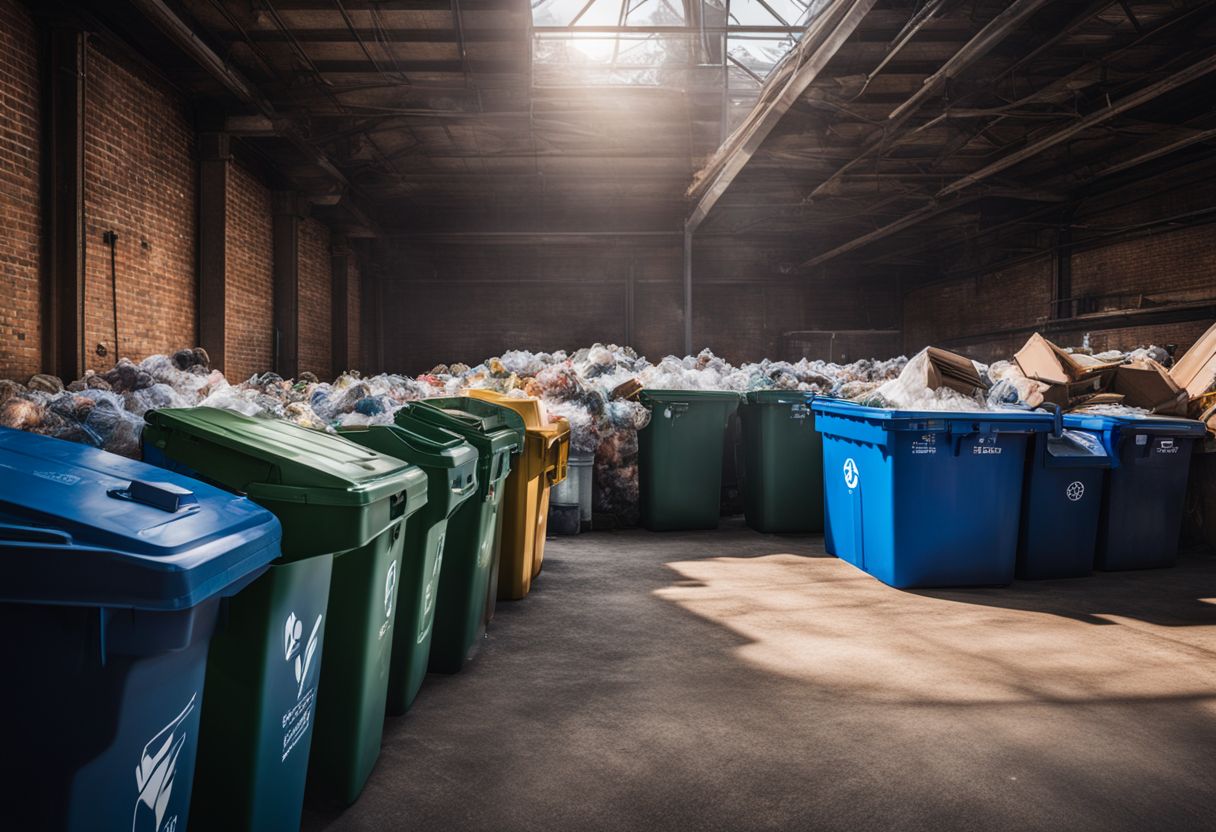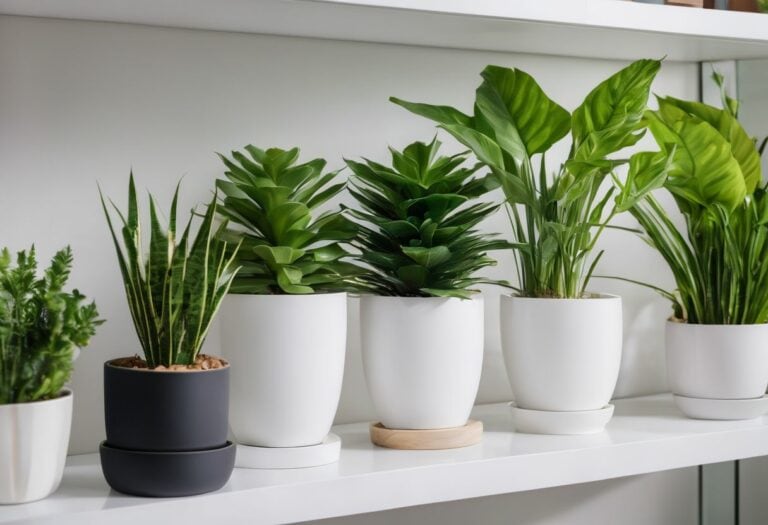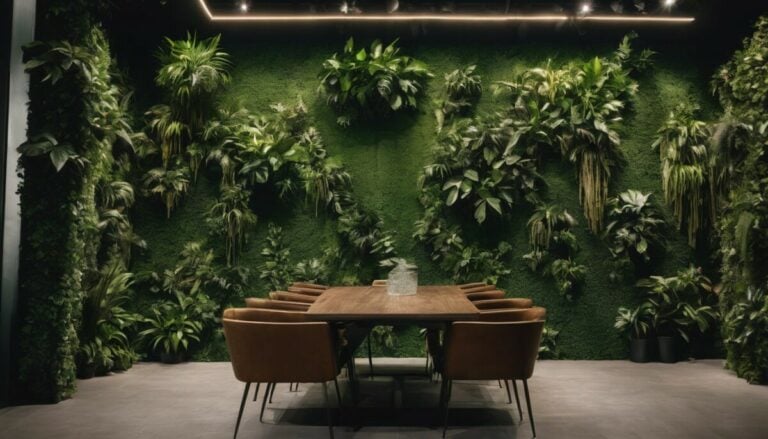Unraveling Sustainability: What is the Difference Between Recycled and Repurposed?
Ever found yourself scratching your head over the distinction between recycling and repurposing items? You’re certainly not alone! Just like you, I once found myself tangled in the web of these concepts.
But after a substantial amount of research, this blog is now ready to take away some of that confusion – focusing on unraveling their unique processes, benefits, and environmental impacts.
Are you as eager as I am to lay those questions to rest? Well then, let’s dive right in!
Key Takeaways
- Recycling involves breaking down materials and turning them into new products, while repurposing means giving an object a new purpose without destroying its original form.
- Recycling helps reduce waste and conserve resources by converting materials into raw materials for manufacturing new items.
- Repurposing extends the life of an item by finding creative ways to use it for a different purpose, reducing the need for new materials and minimizing waste.
What is the Difference Between Recycled and Repurposed?

Recycling, upcycling, and repurposing are three ways to reuse items we no longer need. All three help save our planet but in different ways. Let’s dive into what each term means.
Recycling is turning waste into new things. The old stuff gets broken down before it becomes something new. Upcycling is a lot like recycling. But with upcycling, the old item doesn’t get broken down first – it just turns into something better right away! Repurposing is when you take an item that had one job and give it a new one.
With this method, nothing has to be destroyed or changed too much – you just find a creative way to use it again!
What is Recycling?

Recycling is the process of converting waste materials into reusable materials, often through a series of steps such as collection, sorting, processing, and manufacturing.
Definition and Process
Recycling is the act of turning waste into new stuff. Imagine a plastic bottle. The recycling process takes this bottle, breaks it down and makes it raw material once more. Now this raw material can be used to make a brand-new item.
This serves two goals – reducing waste and saving resources.
This process is vital for our planet’s health as well as ours. It stops more trash from filling up landfills or ending up in oceans or rivers where it harms wildlife. When we recycle, fewer resources like water or minerals get used up too fast.
So remember, when you toss that soda can or newspaper into the right bin, you’re playing your part!
Benefits of Recycling
I want to make clear the gains from recycling.
- We can lessen the trash going to dumps and burners.
- This act allows us to save our nature’s gifts like water, soil, and oil.
- Another plus of this action is lowering the energy usage needed in making new stuff. We use less power as we use old items once again.
- It makes a big difference in saving places where animals live when we reuse things instead of throwing them away.
- Recycling also gives us a way to cut down on greenhouse gases which harm our air.
- A good thing about it is that we can limit how much space trash takes up in landfills.
- By doing so, I play my part in keeping Earth clean and green for everyone who lives here now and those who will be born later.
Examples
Recycling and repurposing are great ways to give new life to old items. Here are some examples of each:
Recycling:
- Plastic bottles being turned into polyester clothing
- Aluminum cans being melted down and made into new cans or other products
- Paper being shredded and turned into new paper products like notebooks or toilet paper
Repurposing:
- Using glass jars as candle holders or storage containers
- Turning old wooden crates into shelves or planters
- Transforming an old ladder into a bookshelf or towel rack
What is Upcycling??
Upcycling is the process of transforming or repurposing old, discarded materials into something new and useful. Discover the benefits of upcycling and how it promotes sustainability.
Read more to learn about creative ways to give new life to old items.
Benefits of Upcycling
Upcycling has several benefits that make it a sustainable alternative to recycling. Here are some key advantages:
- Reduces waste: Upcycling helps minimize the amount of waste sent to landfills and oceans. By repurposing items instead of discarding them, we can lower our impact on the environment.
- Saves resources: Upcycling conserves valuable resources by reusing existing materials. This reduces the need for new production and saves energy, water, and raw materials.
- Cost-effective: Upcycling can be a cost-effective way to create new products or enhance existing ones. Instead of buying brand new items, you can give old objects a new life with a bit of creativity.
- Fosters creativity: Upcycling encourages creative thinking and problem-solving skills. It allows us to see the potential in discarded materials and transform them into something unique and valuable.
- Supports local businesses: Upcycling often involves working with local artisans and craftsmen who specialize in repurposing items. By supporting these businesses, we contribute to the growth of our communities.
- Promotes self-sufficiency: Upcycling empowers individuals to become more self-sufficient by finding alternative uses for items they already have. It promotes resourcefulness and a sense of satisfaction in creating something useful.
- Contributes to a circular economy: Upcycling is an essential component of a circular economy, where resources are kept in use for as long as possible through reuse and recycling practices.
What is Repurposing?
Repurposing involves giving new purpose or function to an item, often in a creative or inventive way.
Benefits of Repurposing
Repurposing items can bring several benefits. Here are some of them:
- Reduces waste: Repurposing allows us to give a new life to items that would otherwise end up in landfills, reducing the amount of waste produced.
- Saves resources: Instead of buying new items, repurposing allows us to use existing materials and resources to create something new, saving energy and raw materials.
- Promotes creativity: Repurposing encourages us to think creatively and find innovative ways to transform used items into useful or decorative pieces.
- Saves money: Repurposing items can be a cost-effective alternative to buying new ones. By repurposing, we can give new purposes to things we already have without spending extra money.
- Supports sustainability: By repurposing, we contribute to a more sustainable lifestyle by lowering our impact on the environment and conserving resources for future generations.
- Adds uniqueness: Repurposed items often have a unique charm and character since each piece is transformed according to personal taste and style.
- Encourages mindful consumption: Repurposing promotes conscious decision-making about what we consume and how we use our belongings, fostering a more thoughtful approach towards our material possessions.
- Sparks inspiration: Seeing the potential in discarded objects and finding creative ways to repurpose them can inspire others to do the same, creating a ripple effect of sustainable practices.
The Difference Between Recycling and Upcycling
Recycling involves breaking down materials and converting them into raw materials for manufacturing new products, while upcycling focuses on transforming existing items into new or improved versions without destroying their original form.
Methods and Goals
Recycling and upcycling have different methods and goals. Recycling is a process that involves converting waste materials back into raw materials, which are then used to create new products.
The goal of recycling is to reduce waste, conserve resources, and promote environmental conservation. On the other hand, upcycling takes waste materials and creates something new from them without any chemical changes.
The goal of upcycling is to repurpose items in a creative way and give them a new life. Both methods aim to contribute to a circular economy and sustainable practices by reducing the need for raw materials and minimizing waste disposal.
When choosing between recycling and upcycling, it’s important to consider factors such as the condition of the item, its potential uses, and personal preferences for eco-friendly practices.
Environmental Impact
Recycling and upcycling both have an impact on the environment, but the extent of this impact can vary. Recycling involves collecting materials like paper, plastic, and glass and processing them to create new products.
This process requires energy and resources, but it helps reduce waste in landfills and conserves valuable resources. Upcycling, on the other hand, involves transforming old or discarded items into something new or useful without breaking them down entirely.
This method often requires creativity rather than extensive energy consumption or material recovery. Both recycling and upcycling contribute to reducing our environmental footprint by reducing waste and carbon emissions associated with producing new items.
The Difference Between Recycling and Repurposing
Recycling and repurposing are both beneficial methods to extend the life of an item, but they operate in different ways and serve different purposes. Understanding these differences will help you make a more informed decision about how to handle your used items.
| Aspect | Recycling | Repurposing |
|---|---|---|
| Definition | Recycling involves reprocessing an item into a new raw material. | Repurposing aims to reuse an item in its current form for a different purpose. |
| Process | Recycling follows an industrial process and often results in the loss of an item’s original form. | Repurposing requires some creativity and ingenuity, but generally allows the item to maintain its original form. |
| Benefits | Recycling reduces waste and converts useful resources into new products. | Repurposing extends the life of an item, reducing the need for new materials and minimizing waste. |
| Examples | Recycling a plastic bottle into new plastic materials. | Using an old ladder as a bookshelf. |
When choosing between recycling and repurposing, consider the type of item, its condition, and your personal abilities or resources. Both methods are valuable contributions to the three Rs (Reduce, Reuse, Recycle), which emphasize the importance of reducing waste, reusing items, and recycling materials for sustainability.
The Difference Between Upcycling and Repurposing
Understanding the differences between upcycling and repurposing is crucial for knowing how to best utilize your items for environmental sustainability. Here’s a quick comparison of the two concepts:
| Upcycling | Repurposing | |
|---|---|---|
| Definition | Utilizes old or discarded materials or goods to create something of higher quality or value. | Reuses an item for a different purpose on a long-term basis, generally without alteration. |
| Chemical Change | No chemical change happens in the process. | No chemical change happens in the process. |
| Environmental Impact | Considered more sustainable than recycling as it does not involve the process of destroying the original material. | Also sustainable as it prolongs the life of an item and reduces demand for new manufacturing. |
| End Product | End product is a new item, typically of better quality or aesthetic value than the original. | End product is the same item, but used for a different purpose. |
By understanding these key differences, I hope you can make more informed decisions about the ways in which you can contribute to a greener and more sustainable environment.
How to Choose the Right Option for Your Items
Consider factors such as the condition, material composition, and intended use of your items to make an informed decision. Read on to learn more about making sustainable choices for your belongings.
Factors to Consider
When choosing the right option for your items, here are some factors to consider:
- Condition: Is the item still in good condition and can it be used as-is or with minimal repairs?
- Functionality: Does the item still serve its original purpose or can it be repurposed for a different use?
- Material: What is the composition of the item? Can it be recycled or upcycled based on its material type?
- Environmental Impact: Consider the environmental benefits of each option. Recycling reduces waste and conserves resources, while repurposing extends the life cycle of an item.
- Energy and Resources: Think about the amount of energy and resources required for recycling or repurposing an item. Recycling usually involves processing and manufacturing, while repurposing often requires creativity and ingenuity.
- Accessibility: Determine if there are recycling facilities or programs available in your area that accept the specific item you want to recycle.
- Personal Preference: Consider your own values and preferences when deciding between recycling and repurposing. Which option aligns better with your sustainability goals?
Combining Methods for Sustainable Practices
To practice sustainable habits, you can combine different methods for reducing waste and reusing materials. Here are some ways to do it:
- Buy used products: Instead of always purchasing new items, consider buying used items that are still in good condition. This reduces the demand for new resources and prevents perfectly usable items from ending up in landfills.
- Source reduction: Look for ways to reduce waste at its source. This means being mindful of your consumption habits and finding alternatives that generate less waste. For example, using a reusable water bottle instead of disposable plastic bottles or opting for digital copies instead of printed materials.
- Salvage materials: Before throwing something away, think about if any parts or components can be salvaged and used for other purposes. For example, if you’re discarding an old piece of furniture, you might be able to reuse the hardware or the wood for another project.
- Combine repurposing and recycling: If an item cannot be repurposed directly, consider recycling it instead. Recycling involves breaking down materials to create new products. Look for recycling centers in your area that accept different types of materials such as paper, plastic, glass, and metal.
Conclusion
In conclusion, it is important to understand the difference between recycling, upcycling, and repurposing. Recycling involves breaking down materials to create new products while upcycling creates something new from waste without destroying it.
On the other hand, repurposing means using an object for a completely different purpose. By knowing these distinctions, we can make informed choices about how to minimize waste and contribute to a more sustainable future.
FAQs
1. What is the difference between recycled and repurposed items?
Recycled items are processed to create new products, while repurposed items are creatively transformed for a different use without processing.
2. How do recycled items become new products?
Recycled items go through a process where they are broken down or melted to create raw materials that can be used to make new products.
3. Can any item be recycled or repurposed?
Many items can be recycled, such as paper, plastic, glass, and metal. Repurposing can be done with various objects depending on creativity and functionality.
4. What are the benefits of recycling and repurposing?
Recycling reduces waste, conserves resources, and helps protect the environment. Repurposing promotes creativity, reduces the need for new purchases, and gives old objects a new life.
5. How can I contribute to recycling and repurposing efforts?
You can contribute by separating recyclable materials from regular trash, supporting businesses using recycled materials, donating unwanted goods for repurposing projects or DIY crafts at home







